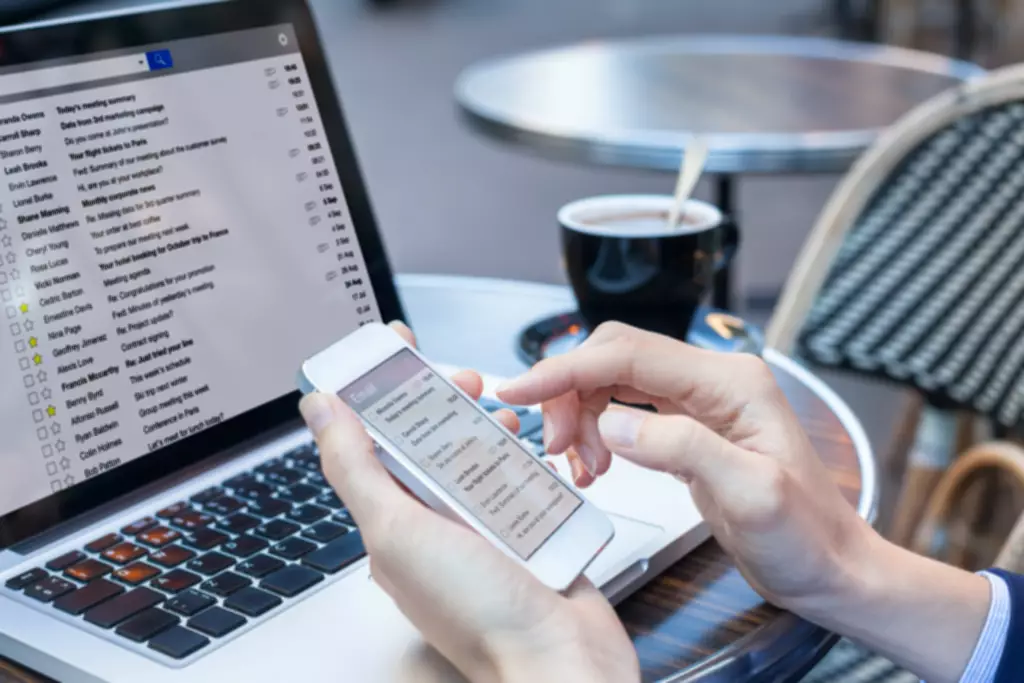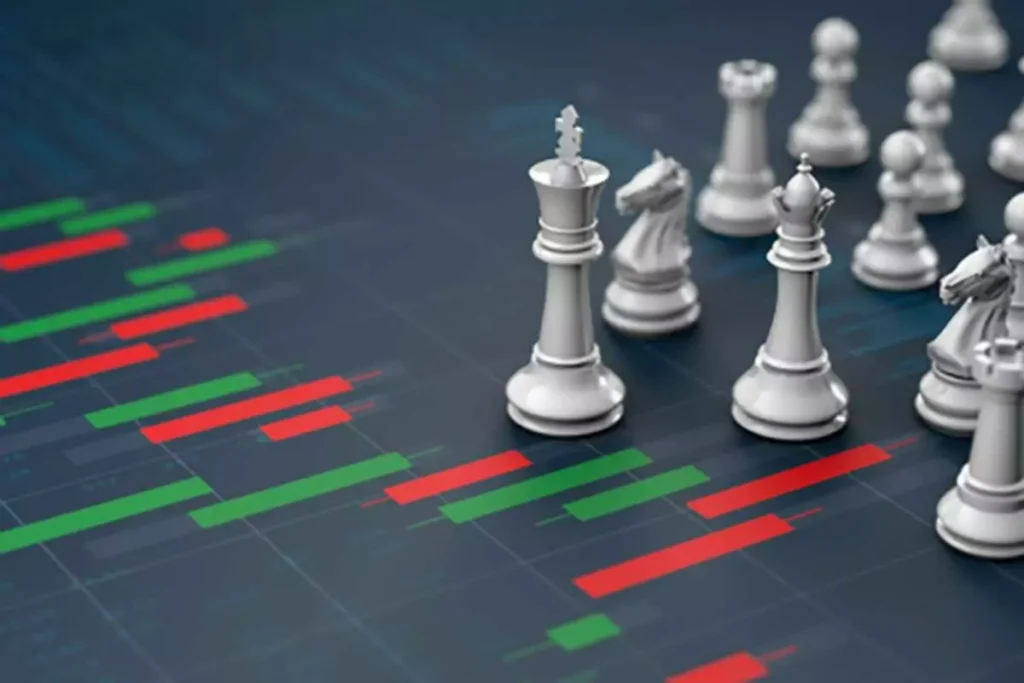What Is A Blockchain & How Does It Work?
Content
It costs a lot to make sure everyone’s records are in sync. Blockchains can potentially provide a more efficient way to do this so that everyone is always on the same page. When a database is maintained by a single authority, if that authority gets compromised by a hacker, or even by natural disaster, the people relying on that database can lose access to all their data. With a blockchain, all the people relying on the database can keep and update their own copy of the data. There’s nothing too out of the ordinary here because pretty much everything that’s currently on the internet works this same way.
So just what is cryptocurrency, and how does it work? Essentially, it’s digital money that’s bought and sold online. And it doesn’t go through traditional financial institutions like banks. Instead, these currencies operate in a completely decentralized system that uses so-called blockchain technology to track transactions. To see how this works, let’s look at how you’d buy something with cryptocurrency.
In this article, we’ll explain what these core terms are and how they work in Web3. Contrast this with traditional finance where only one node operated by a bank (the bank’s central server) needs to be manipulated rather than thousands of independent nodes . You can see how much more secure a shared ledger can be than a central database. Cryptocurrency is a type of digital asset that uses cryptography to validate and secure transactions that are digitally recorded on a distributed ledger or any similar technology. Virtual currencies have shown that blockchains can work at some level, but they also come with significant downsides.
Most of the thefts involving virtual currencies are a result of people’s having the password, or private key, to a virtual currency wallet stolen or hacked. Virtual currencies are particularly vulnerable to this kind of attack because once a hacker moves money out of a wallet, there is no central authority to move it back. Any blockchain wallet or account is generally only as secure as its private key. More recently, many companies and governments have been interested in using blockchains to store data that has nothing to do with virtual currency transactions, or transactions of any sort. While banks are building blockchains that can track payments between accounts, governments are experimenting with using blockchains to store property records and votes.
Get Maximum Knowledge of Crypto Market with these Crypto Trading Courses – Analytics Insight
Get Maximum Knowledge of Crypto Market with these Crypto Trading Courses.
Posted: Sat, 15 Oct 2022 12:42:59 GMT [source]
Brave is built by a team of privacy focused, performance oriented pioneers of the web. Many users rely on private browsers to keep their Internet habits away from prying eyes. But with so many options out there, what’s the best private browser for you? Need to third party for verification and execution of Transaction make the process complex.
App Privacy
The data on these shared ledgers could be anything, but it’s most commonly a record of cryptocurrency transactions . For example, sending bitcoin from one person to another will incur a transaction fee (sometimes called a “gas fee”) for using network resources like electricity and computing power. In the world of blockchain, we refer to these network participants as “nodes”—they’re essentially the individual computers connecting to the blockchain network. They must communicate with one another about new transactions, or blocks of data, and verify their authenticity.
Digital assets are any digital representation of value that may function as a medium of exchange, a unit of account, and/or a store of value. It’s not that you can’t trust those who you conduct business with its that you don’t need to when operating on a Blockchain network. For more information, see the developer’s privacy policy. There are several limitations that come with the old way of keeping data, with a single authority responsible for all the updates. The Blockchain.com Wallet is the easiest way to buy, sell, swap, and earn rewards on your crypto, including BTC, ETH, DOGE, and more.
In traditional PoW blockchains like Bitcoin, 51% of network nodes need to agree that a block is valid before it gets added to the chain. Once a set of transactions are grouped together into a block, the sum of all that data goes through a cryptographic method called “hashing,” where all of the inputs produce one unique output . This transaction ID hash is a hexadecimal value (that just means 0–9 or a–f) that people can use to verify any given block is valid. You may have started to hear a lot more about blockchains, nodes, cryptocurrency and wallets recently?
Blockchain
A blockchain is a relatively new kind of database that has become the trendy solution for storing digital information more securely. The International Data Corporation recently forecast that companies and governments will spend $2.1 billion on blockchains in 2018, more than double what was spent last year. All these technologies come together to enable the decentralized version of the internet, this new thing called Web3. And the Brave Browser—with its built-in crypto wallet and native tie to the Basic Attention Token —offers a secure and speedy gateway to connect to Web3 and start exploring. This system has made many big players looking at the technology uncomfortable.

The communally maintained nature of the Bitcoin blockchain has brought it comparisons with Wikipedia, which relies on a broad network of contributors rather than one author. In the original documents describing Bitcoin, the virtual currency’s new database was not referred to as a blockchain. But it got that name over time because all of the transactions coming onto the network were grouped into blocks of data and then chained together using sophisticated math.
Blockchain Com Wallet: Buy Btc
The fact that many computers are competing to verify a block ensures that no single computer can monopolize the Bitcoin market. To ensure the competition stays fair and evenly timed, the puzzle becomes harder when more computers join in. The Bitcoin protocol says mining will continue until there are 21 million Bitcoins in existence.

Click the downloaded file at the top right of your screen, and follow the instructions to install Brave. Click the downloaded file at the bottom left of your screen, and follow the instructions to install Brave. Addressed certain issues related to the tax-exempt status of entities in the digital asset industry. Frequently Asked Questions on Virtual Currency Transactions for individuals who hold cryptocurrency as a capital asset and are not engaged in the trade or business of selling cryptocurrency.
File
Because all the computers on the network have to record every transaction, there are limits to how much data blockchains have been able to process. There are many efforts to fix this, but none have been proven to work. When blockchains don’t have a virtual currency, they have to find a different mechanism to get everyone to agree on new additions to the ledger. These mechanisms are called consensus algorithms, and they are among the most contentious pieces of blockchain design. Transactions involving digital assets are taxable by law just like transactions in any other property.
- From Bitcoin to Litecoin to Ethereum, we explain how cryptocurrency transactions work.
- Each blockchain typically has one cryptocurrency that is natively integrated with the network and its consensus mechanism.
- The most valuable virtual currency other than Bitcoin is Ether, which runs on the Ethereum blockchain.
- Transactions involving digital assets are taxable by law just like transactions in any other property.
- The shared nature of the Bitcoin blockchain was useful for the virtual currency because the shadowy creator of Bitcoin, known as Satoshi Nakamoto, wanted to create a currency with no central authority involved.
- Now, when visiting an app or website on Web3, you’ll be asked to connect your wallet.
And if they solve it first, their record of the block of transactions becomes the official record. They’re rewarded with Bitcoins of their own, and the network gets a new block on the chain. But instead of chipping away at rock, you’re solving complex puzzles.
How Do Nodes Add New Blocks To The Blockchain?
Blockchains, Nodes, Cryptocurrency, Wallets… In this article, we’ll define some core Web3 terms, and scratch the surface of decentralized technologies. Provides guidance on FBAR reporting requirements related to digital assets. This issue, of how to keep everyone on the same page, is what the most important, but also the most confusing, bits of blockchain technology are aimed at resolving.

You may have to report these transactions on your tax return. The first blockchain was the database on which every Bitcoin transaction was stored. Since Bitcoin began in 2009, the blockchain has come to hold over 160 gigabytes worth of data about every time a Bitcoin is sent between two digital wallets.
The state of the network includes things like who owns which assets, and who sent cryptocurrency to who. A blockchain network is Blockchain Trends a revolutionary new type of network that’s capable of being decentralized. Blockchain is what makes the new Web3 model possible.
A digital asset that has an equivalent value in real currency or acts as a substitute for real currency has been referred to by the IRS as convertible virtual currency. Bitcoin is one example of a convertible virtual currency. Bitcoin can be digitally traded between users and can be purchased for, or exchanged into, U.S. dollars, Euros and other real currencies or digital assets. While private keys are a security vulnerability, blockchains are generally more secure against attacks in which a bad actor tries to change the records in the database. Because of the way blocks are chained together, it is obvious when someone has tampered with old records.
Those transactions, batched into blocks, are added to the shared ledger by network nodes. Nodes are, in turn, compensated with cryptocurrency for their participation in the network. Crucially, there https://xcritical.com/ is no company, IT guy, or CEO that exercises control over a blockchain. Instead, individual network participants must come together as peers to reach consensus about the state of the network.
How Do Crypto Wallets Enable You To Sign On To An App Or Website On Web3?
From Bitcoin to Litecoin to Ethereum, we explain how cryptocurrency transactions work. But if you ask even the people who work with blockchains to define the technology, you are likely to get a stuttering response. In this article, we’ll define some of these core terms, and scratch the surface of decentralized technologies, what they can do, and how they work in Web3. Web3 browsers are a type of browser that allow users to connect to Web3 and access resources like decentralized applications . This article explains how they work and why they are important. Click the downloaded file, and follow the instructions to install Brave.
Crypto Wallets: Store Assets And Connect To Web3
Without cryptocurrency, blockchains lack the incentive mechanism for network participation. Without crypto wallets, users would have no place to store that cryptocurrency . And without blockchain networks, Web3 couldn’t exist. At its core, a blockchain is made up of many individual computers or servers that maintain one shared record of data, despite being remotely located all over the world. This shared record is commonly referred to as a “ledger,” and it functions much like a traditional ledger used in accounting.
What Does Blockchain Have To Do With Web3?
Say that Alice wants to buy a bike from Dan using Bitcoin, her cryptocurrency of choice. Alice begins by logging into her Bitcoin wallet with a private key, a unique combination of letters and numbers. With a traditional financial transaction, the exchanges get sent to banks on each side who record the money being subtracted from one account and added to another. But remember, in this scenario, there are no banks or middlemen. Instead, Alice’s transaction is shared with everyone in the Bitcoin network.
In fact, blockchain networks tend to be much more insulated from manipulation than traditional, centrally managed databases that operate behind closed doors. Over time, some of these new virtual currencies added on significant new features that updated the blockchain concept so that it could handle more kinds of information. The shared nature of the Bitcoin blockchain was useful for the virtual currency because the shadowy creator of Bitcoin, known as Satoshi Nakamoto, wanted to create a currency with no central authority involved. Because the records are kept communally, no one computer or institution is in charge.
That’s set to happen around 2140 — if Bitcoin lasts that long. Basically, if you’re interacting with Web3, you need a crypto wallet to do so. Because Web3 relies on blockchain networks, blockchains rely on cryptocurrency to facilitate operations, and cryptocurrency needs crypto wallets to be stored in, sent from, and transacted with. The only difference is that, unlike a travel passport, crypto wallets don’t have any central authority—like a government—managing them. What’s different here is that, while in the Web 2.0 world usernames and passwords only grant you access to one app, a wallet address and private key will grant you access to any app or website on Web3.
